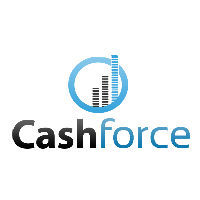Helping Hand: Using Cashforce to Manage Growth Through M&A
24-08-2021 | treasuryXL | Cashforce
How one treasurer used Cashforce technology to improve forecasting and support growth.
When one treasurer saw that his team was getting too bogged down managing the company’s dozens of bank accounts across 25 entities, he sought out an automated cash management system, but he had a concern: the company is continually growing through mergers and acquisitions, and in the past, new accounts made everything muddy.
- The process of integrating a new entity and any accounts it brings along can be cumbersome—and who knows if their ERP would even be compatible with the automated solution he chooses?
- He said that Cashforce, a cash forecasting and working capital analytics solution that can work with multiple ERPs, was the answer. “Cashforce’s ability to take feeds from multiple ERP systems was big.”
New accounts, new problems.
Before turning to Cashforce, the treasurer had significant capital committed to grow the business through acquisitions. He only had two or three people managing this aspect, and he said the company’s TMS offered little assistance.
- “Cash is our lifeline,” he said. “To me, the most important thing is knowing how much cash we have and where it is.
- “We’re not over-leveraged, but we’re leveraged,” he said, so finding a cash management solution that provides quick access to every detail was crucial.
- But the treasurer said his company doesn’t expect accounts that come with newly acquired companies to work with its preexisting ERP system. Cashforce, which can take data feeds from new ERP systems, was the key.
- “We needed a cash management solution that integrated with our current ERPs and future ERPs to be able to feed data into the tool,” he said.
Feel the force.
Because Cashforce can take those inputs, the treasurer said it could work. But would it actually save enough time, and free up cash through efficient management of working capital? The solution, he said, had four clear advantages that made cash forecasting “a lot more accurate” in just six months:
- Ease of use, with data visualization tools that teams can use without having to dig into reams of numbers.
- The ability to drill down into the data into transaction-level detail.
- The ability to take these now automatically generated data-driven insights to management instead of spreadsheets.
- The ability to view daily bank positions.
Feel the force.
Because Cashforce can take those inputs, the treasurer said it could work. But would it actually save enough time, and free up cash through efficient management of working capital? The solution, he said, had four clear advantages that made cash forecasting “a lot more accurate” in just six months:
- Ease of use, with data visualization tools that teams can use without having to dig into reams of numbers.
- The ability to drill down into the data into transaction-level detail.
- The ability to take these now automatically generated data-driven insights to management instead of spreadsheets.
- The ability to view daily bank positions.
Bonus: data literacy.
An added “unofficial” benefit of Cashforce that the treasurer added was change management—the opportunity to get a once data-hesitant team to embrace the possibilities offered by analytics.
- Though he wasn’t intending on using Cashforce to manage credit and collections, through encouraging his team to dig into the data, “one of the biggest advantages is I got my C&C manager to give me a much more accurate forecast.











